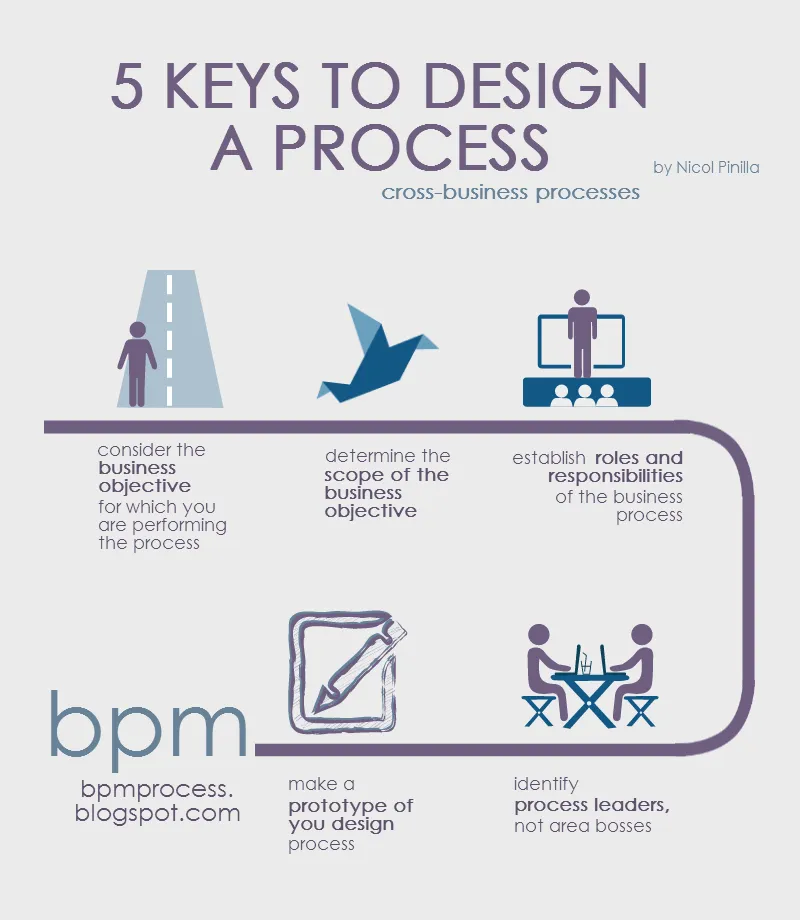5 Keys to Design a Cross-Business Process
Due to operational efficiency, the corporate world is moving from a strategy based Management Functions to Process Management Strategy therefore requires simple tools and best practices to achieve a definition of key tasks, and hence achieve management systematic processes.

1. Consider the business process, not the process of an area
BPM seeks to make business processes and as such, the processes of an area or department segregate themselves in a transverse process tasks. What? Ie, identify the business objective and determine the tasks and roles that are associated to this objective can be achieved, regardless of the areas or departments involved.2. Determine the start and end
Beyond creating from scratch a business process, it is important to see the current status ie As-Is, in order to design / create a solution that improves both productive and efficient ie To-Be. Obviously, do not stay with the beginning or the end that tell people, but should establish the scope for the Purpose of Business, so you can clarify the flow of tasks that are associated. The key to achieve this is based on a good survey of the process.3. Forget the bureaucracy! Look roles and responsibilities aligned to business processes
I have the strong conviction that as well as products and technology are geared to the needs of a user, processes must meet the demands of the roles that impact a business process so that it meets the objective marked to compete in a market.4. Identify process leaders, not bosses!
Obtain the knowledge of those roles that seem to know all the business as if it were his own family, these people are potential leaders processes with end-to-end view of business performance, know the risks and provide solutions for mitigate them.5. Make a prototype of your design
I know it is not a piece of furniture nor a mockup, but the tasks analyzed and observed to be understood by all stakeholders, remember that you can not impose its views but should make suggestions that will improve the performance of the process, but these should be detailed in a prototype where people can visualize their role through the process.Some other key factor to consider when designing a transversal process? You can download the infographic to remember these tips!

I hope you have been helpful this post, be sure to comment!